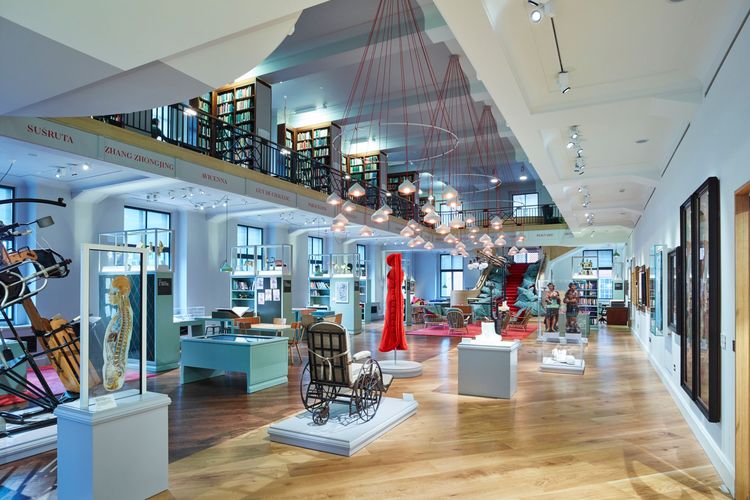

Crafts Council Gallery
Islington, London, 2017–21
The transformation of a 19th century Grade II listed chapel to create a new gallery, library and event space for the Crafts Council.
The Crafts Council is the national development agency for contemporary craft in the UK. They want craft to be accessible to everyone, to inspire new makers and start new conversations. For the past 15 years they have focused on developing national initiatives with partner organizations, without a space of their own. In 2017 they appointed AOC to redevelop Claremont Chapel to create a new home for craft.
The Grade II listed building first opened in 1819 as a congregational chapel but has since enjoyed a diversity of uses, from Victorian Mission House to 1960s dental equipment showroom. The project redevelops the ground floor to provide a new contemporary gallery, study area, library housing 5,000 publications, public lobby and forecourt. The design evolves the neutrality of the white cube gallery by introducing the tactile qualities of natural materials and new uses to create a hybrid public space.


The original chapel enjoyed a naturally lit, triple height space with a gallery which ran around all four walls on iron columns. Two centuries of conversion, adaptation and infill resulted in a dark ground floor with a reduced ceiling height. Existing linings and redundant services have been stripped back to maximise the generosity of the space. A large square lightbox hangs between four central columns to create a bright, calm focus and a memorable figure at the centre of the deep plan. The walls are lined in natural clay plaster. New painted timber beams articulate the ceiling and discretely incorporate gallery lighting. The original parquet timber floor is exposed and made good, the found concrete infill creating pixelated surrounds to the central columns.




The gallery sits directly adjacent to a library and study area, a spatial contradistinction that challenges the behaviours and associations of each to create a permissive space. The study area was a collaboration with Sebastian Cox, our designs informed by the makers’ material explorations and complemented with a suite of loose furniture. The indigo of the ebonised British chestnut wall linings creates material and graphic contrast with the off-white clay gallery. British ash shelving holds the display of books and objects from the Crafts Council collection. An internal window seat frames a view from the gallery to the foyer and the forecourt beyond.


"AOC has done something delicate, subtle and on occasion barely visible. More like the lining of a fine suit, the space is comfortable, carefully tailored and slightly surprising."
Edwin Heathcote, Financial Times



The foyer provides a generous public welcome and a transition from the busy Pentonville Road to the gallery and study area. Blue natural clay walls edged by super-sized ebonised chestnut architraves enhance the scale of the room and create a temporal ambiguity. A reconditioned window and fanlight reinforce the external qualities of the space.





The existing building and forecourt have been adjusted to improve the connection with the street and passersby. The Ionic entrance portico has been retained and fine-tuned, with new brass handles, secondary glazed doors and large scale sign-painting. The gravitas of the entrance is created by its elevated position, raised above the street. A previous attempt to provide level access had resulted in steep ramps and cluttered handrails that compromised access for all. These have been carefully removed and replaced with wide steps and a discrete platform lift to reinstate the generosity of welcome enjoyed when the building first opened. Portland stone steps and pigmented reconstituted stone line the forecourt, providing an inviting, robust outdoor room for the gallery to extend into.




Invited design competition. First Prize. Built.
Awards
- AJ Retrofit: Cultural Building shortlisted 2022
- New London Awards: Culture shortlisted 2022
Client
Crafts Council
Location
44A Pentonville Road, London N1 9BY
Structural engineers
HRW
Services engineer
Ritchie+Daffin
Bespoke joinery & furniture
Sebastian Cox
Graphics
Pentagram
Photography
Adam Firman, David Grandorge, Eva Herzog


